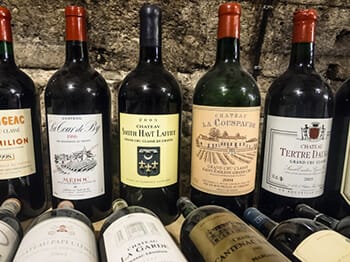
In a race to predate each other, two staples of modern Hampton life—cheese and wine, run neck in neck for the claim.
Evidence of wine production has been uncovered in excavation sites from 6000 BC in Georgia, 5000 BC in Iran, and 4500 BC in Greece. There is even evidence of rice-and-honey wine on pottery shards found in central China, believed to have been fermented from wild grapes and hawthorn fruit, from about 7000–6600 BC. This means wine is over 8,000 years old.

Cheese, not to be left out, made its first appearance archaeologically in 5500 BC in Poland; researchers have found strainers with milk fats molecules. Similar pottery pieces have been found in Switzerland (where else?!) dated to 6000 BC and hypothesized to be cheese strainers.

Advocates, in an attempt to place cheese at an even earlier time, postulate that it is likely that cheese was first made around when sheep were first domesticated, in 8000 BC.
So cheese, too, can claim a provenance of at least 8,000 years.

Both cheese and wine share accidental discovery as well. Cheese was likely discovered after enzyme-containing rennet in the animal stomachs used to transport milk caused production of curd and whey. Wine likely resulted from the accidental fermentation of berries stored long enough that their sugar plus the heat started the chemical process.
But back to known dates.
Cheese—and wine—were both firmly established in production around 4000 BC, when dairying existed in the Sahara grasslands, and the oldest-known winery existed in Armenia (4100 BC).
The claim for true “first” is thus pretty close, archaeologically speaking. But the story is not over. Wine, first from Mesopotamia (Georgia, Armenia, Azerbaijan, Iran, and Turkey), and cheese, first from Sumeria/Iraq and also the Sahara, combined to create perhaps the first wine and cheese event. The rest, as they say, is history.
The Egyptians, Greeks, and Romans perfected wine-making. Egyptians were the first to create arbors and to develop advanced pruning methods. The Greeks added spices to fermentation, and used wine for medicinal purposes. The Romans ran with it, so to speak, classifying, studying, pruning, and developing wine production. They helped the proliferation of vineyards, with their plantings following their conquests. They even floated olive oil on top of their wine to preserve it and prevent oxidation—perhaps unwittingly laying claim to the first salad dressing in a bottle.
The three cultures also advanced the widespread production of cheese. Egyptian cheese making is noted on tomb murals; Romans and locals alike shared cheese making; and Greeks relied on cheese as a staple of their daily life.
The Chinese come into the picture in 1615 BC as creators of the first preserved cheese.
With the spread of civilization—and cheese, preferably on baguettes— into Europe, it was possible for softer cheeses to evolve, as there was less need for salt to preserve them in the cooler climes.
Today
Some postulate that today there are 400 French cheeses and about 900 variations worldwide; but with all the slight variations in production one could argue there are actually many more types.

So, too, with wine. There are over 10,000 varietals of grapes and therefore wines, with the core types numbering at just five or so. Grapes are grown throughout the world on every continent except Antarctica.

If you need prep or clean up help before or after your cheese and wine event or party, we are here to help. Call A Votre Service! At 631-725-2128 or email us at mail@avshamptons.com
Amitiés,
Jocelyne






